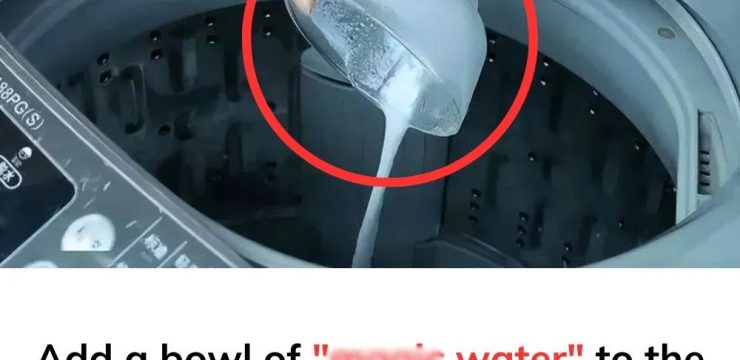Electric fans are a household essential, especially during sweltering summer days when they provide much-needed relief from the heat. However, after continuous use, fans tend to accumulate a significant amount of dust and grime on their blades and protective grills. This not only diminishes their efficiency but also poses health risks by circulating dust and allergens throughout the air. For many people, particularly those unfamiliar with assembling and disassembling appliances, cleaning an electric fan can seem like a daunting task. Fortunately, there’s a simple yet highly effective method to clean your fan without taking it apart or requiring extensive effort.

1. How to Clean Fan Blades Without Disassembling or Washing
Traditional cleaning often involves unscrewing the fan’s grill, removing the blades, washing them individually, and then carefully reassembling everything. While effective, this method can be time-consuming and intimidating for those who aren’t confident in their technical skills. Thankfully, there’s a far easier way to achieve a spotless fan using basic household ingredients.
Materials You’ll Need:
- 1 bowl
- 1 spray bottle
- 250ml water
- 2 teaspoons baking soda
- 1 teaspoon white vinegar
- A few drops of dishwashing liquid
Step 1: Prepare the Cleaning Solution
Start by adding two teaspoons of baking soda and one teaspoon of white vinegar into a bowl. Next, add two to three drops of dishwashing liquid. Stir the mixture thoroughly until it becomes foamy and the baking soda is completely dissolved. Transfer the solution into a spray bottle for easy application.
Step 2: Unplug the Fan for Safety
Before you begin cleaning, always ensure the fan is unplugged. This is a crucial step to prevent any electrical accidents during the cleaning process.
Step 3: Spray the Fan Blades
Spray the cleaning solution generously on both the front and back of the fan blades. The combination of vinegar and dishwashing liquid works to break down stubborn grime, while baking soda acts as a gentle abrasive cleaner to lift stuck-on dirt.
Step 4: Let the Solution Sit
Allow the cleaning mixture to sit on the fan blades for about 10 minutes. During this time, the active ingredients will work together to dissolve the dust, dirt, and any bacteria clinging to the blades.
Step 5: Turn On the Fan
After letting the solution sit, plug the fan back in and turn it on at medium speed. The spinning blades will spread the cleaning mixture evenly and dislodge any remaining dirt. You might notice small specks of grime flinging off the fan during this process.
This straightforward cleaning method saves you time and eliminates the need to take the fan apart. In just a few minutes, your fan will look cleaner and operate more efficiently.
2. How Often Should You Clean Your Electric Fan?
Regular cleaning is key to keeping your electric fan operating at peak performance and maintaining a clean indoor environment. However, how often you need to clean your fan depends on your surroundings and how frequently you use it.
- Low-Dust Environments: In cleaner living spaces where dust accumulation is minimal, cleaning your fan twice a year—once at the beginning of summer and once at the end—should be sufficient.
- High-Dust Environments: If you live in an area prone to dust or pollution, or if your fan shows visible signs of grime, monthly cleaning during peak usage seasons is recommended. During off-seasons when the fan is used less frequently, cleaning it every three months should be enough.
Consistency is key. Regular cleaning prevents dust buildup, keeps the motor from overworking, and ensures smooth airflow.
3. Why Regular Fan Cleaning Matters
Neglecting to clean your fan regularly can result in several problems beyond just poor airflow. Here are a few key reasons why consistent cleaning is essential:
- Improved Air Quality: A clean fan circulates cleaner air, reducing allergens and airborne dust particles in your living space.
- Enhanced Efficiency: Dust-covered blades hinder airflow and force the motor to work harder, reducing efficiency and increasing energy consumption.
- Extended Lifespan: Regular maintenance prevents wear and tear on internal components, prolonging the fan’s lifespan and saving you money on replacements.
- Healthier Environment: Dust and allergens trapped on the fan blades can cause respiratory issues and allergic reactions. Regular cleaning minimizes these health risks.
4. Pro Tips for Fan Maintenance
In addition to routine cleaning, adopting a few simple maintenance habits can keep your fan in top condition year-round:
- Use a Dust Cover: When the fan isn’t in use, cover it with a dust-proof cloth or plastic cover to prevent buildup.
- Vacuum the Grill: Use a handheld vacuum with a brush attachment to remove loose dust from the grill without disassembly.
- Clean the Surrounding Area: A dusty environment contributes to quicker dust buildup on the fan. Regularly clean nearby surfaces and floors.
- Inspect the Fan Regularly: Check for any loose screws, frayed cords, or signs of wear and tear to address issues early.
5. Why This Method Works So Well
The reason this no-disassembly cleaning method is so effective lies in the cleaning power of its ingredients. Baking soda is a gentle abrasive that lifts stubborn grime, while white vinegar dissolves grease and acts as a natural disinfectant. Dishwashing liquid helps break down grease and oil residue, making the solution highly effective without being harsh on the fan’s components.
Final Thoughts
Cleaning an electric fan doesn’t have to be a daunting task. With the right approach and a simple homemade cleaning solution, you can keep your fan blades spotless and your air circulation clean—all without the hassle of disassembling anything. This quick and effective method is accessible to everyone, regardless of technical skills, and can save both time and effort.
Regular fan maintenance is about more than aesthetics; it’s about health, efficiency, and extending the life of your appliance. By following these easy steps and maintaining a cleaning schedule, you’ll ensure your fan runs smoothly, consumes less energy, and keeps your home cool and dust-free all season long. So, don’t wait until your fan is covered in grime—grab your spray bottle, and let your fan work at its best!





